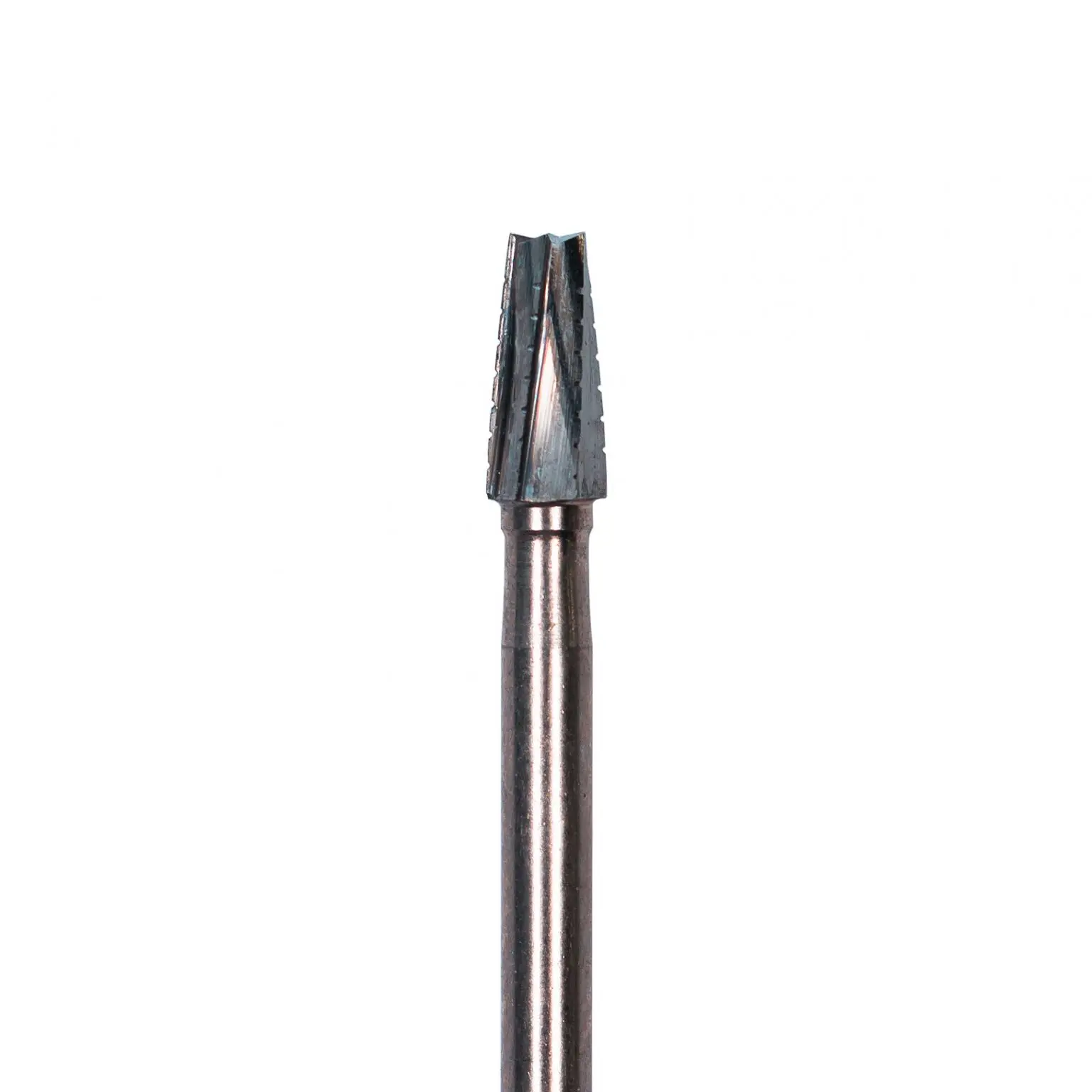Dental files are an integral component in modern dentistry, pivotal in ensuring the successful completion of various dental treatments. This article delves into the comprehensive uses of dental files, highlighting their significance, types, applications, technological advancements, and proper maintenance. Keywords such as dental file, wholesale dental file, dental file manufacturer, dental file factory, and dental file supplier will be seamlessly integrated throughout.
Introduction to Dental Files
● Overview of Dental Files
Dental files are specialized instruments used primarily in endodontics—the branch of dentistry dealing with the diagnosis and treatment of dental pulp and tissues surrounding the root of a tooth. These tools are essential for cleaning, shaping, and enlarging the root canals during root canal therapy. Dental files come in various shapes, sizes, and materials, each designed to accomplish specific tasks within the root canal system.
● Importance in Dental Practices
The significance of dental files in dental practices cannot be overstated. They play a crucial role in removing infected tissue, debris, and bacteria from the root canal, thereby preventing further infection and ensuring the longevity of the treated tooth. Without these tools, root canal treatments would be far less efficient and effective.
Types of Dental Files
● Different Materials (Stainless Steel, Nickel-Titanium)
Dental files are generally made from stainless steel or nickel-titanium. Stainless steel files are rigid and durable, making them ideal for initial canal penetration. On the other hand, nickel-titanium (NiTi) files are more flexible and can navigate curved canals with minimal risk of breakage, enhancing patient safety and treatment outcomes.
● Various Shapes and Sizes
Dental files come in an array of shapes and sizes, each serving a unique purpose. The most common types include K-files, H-files, and rotary files. K-files have a twisted design that helps in scraping and widening the canal, while H-files are used for more aggressive cutting. Rotary files, driven by an electric handpiece, provide consistent and precise canal shaping, reducing operator fatigue and improving efficiency.
Uses of Dental Files in Root Canal Therapy
● Cleaning and Shaping the Root Canal
The primary use of dental files in root canal therapy is to clean and shape the root canal system. This process involves removing inflamed or infected pulp, cleaning out bacteria and debris, and shaping the canal to prepare it for filling. Dental files ensure that the canal is adequately enlarged and smooth, facilitating the subsequent stages of the treatment.
● Removing Infected Tissue
Dental files are instrumental in excising infected tissue from within the root canal. By meticulously cleaning the canal, these tools help eradicate sources of infection, mitigating the risk of abscess formation and promoting healing. The ability to precisely remove compromised tissue while preserving healthy tooth structure underscores the critical role of dental files in endodontic therapy.
Dental Files in Shaping and Smoothing
● Ensuring Proper Canal Geometry
Achieving the correct canal geometry is pivotal for the success of root canal therapy. Dental files aid in shaping the canal to a tapered form, ensuring that it can be adequately filled and sealed. Proper shaping also facilitates the removal of debris and allows for the effective application of medicaments, thereby enhancing treatment outcomes.
● Aiding in Obturation
Dental files play a significant role in the obturation phase of root canal therapy, where the cleaned and shaped canal is filled with a biocompatible material to prevent re-infection. By ensuring that the canal walls are smooth and well-shaped, dental files help create a conducive environment for the filling material to adhere, ensuring a tight, leak-proof seal.
Dental Files in Dental Surgery
● Applications in Surgical Interventions
Beyond root canal therapy, dental files are also employed in various surgical interventions. They are used to access and clean infected areas, remove granulation tissue, and prepare the canal for surgical sealing or apicoectomy—a procedure where the tip of the root is removed. The precision and versatility of dental files make them indispensable in endodontic surgeries.
● Specific Types Used in Surgeries
Certain types of dental files are specifically designed for surgical applications. For instance, surgical files are more robust and can endure the demands of cutting through bone and other hard tissues. The design and material composition of these files are optimized for durability and effectiveness in surgical environments.
Advantages of Modern Dental Files
● Enhanced Flexibility and Durability
Modern dental files, especially those made from nickel-titanium, offer remarkable flexibility, allowing them to navigate complex and curved root canals with ease. This flexibility reduces the risk of file separation (breakage), a common complication in endodontic treatment. Additionally, advancements in manufacturing techniques have significantly enhanced the durability and longevity of dental files.
● Improved Patient Outcomes
The use of advanced dental files directly translates to improved patient outcomes. The precision and effectiveness of these tools ensure thorough cleaning and shaping of the root canal, minimizing the risk of treatment failure. Patients benefit from reduced pain, faster recovery times, and a higher likelihood of retaining their natural teeth.
Maintenance and Sterilization of Dental Files
● Proper Cleaning Techniques
Maintaining dental files in optimal condition is crucial for their performance and longevity. Proper cleaning techniques involve meticulously removing debris and organic matter using ultrasonic cleaners or specialized brushes. Ensuring that files are free from residue prevents contamination and enhances their cutting efficiency.
● Importance of Sterilization to Prevent Infections
Sterilization is paramount in preventing cross-contamination and infection. Dental files must be thoroughly sterilized using autoclaves or chemical disinfectants to eliminate pathogens. Adhering to stringent sterilization protocols not only safeguards patient health but also maintains the integrity of the files, ensuring consistent performance.
Technological Advances in Dental Files
● Innovations in Materials and Design
Technological advancements have revolutionized the design and materials of dental files. Innovations such as heat-treated nickel-titanium files offer enhanced flexibility and strength, reducing the risk of separation. Additionally, the incorporation of advanced coatings and surface treatments has improved the cutting efficiency and lifespan of dental files.
● Impact on Dental Procedures
These technological advancements have had a profound impact on dental procedures. Enhanced file designs facilitate quicker and more efficient canal shaping, reducing chair time for patients and improving the overall ergonomics for practitioners. The ability to precisely and safely navigate complex root canal systems has elevated the standard of care in endodontics.
Challenges and Risks Associated with Dental Files
● Potential Complications (e.g., File Breakage)
Despite their benefits, dental files are not without challenges. One of the primary risks is file breakage, which can occur if excessive force is applied or if the file encounters a hard obstruction. Broken file fragments can complicate the treatment process and may require additional surgical intervention.
● How to Mitigate Risks
Mitigating the risks associated with dental files involves adhering to best practices and using the appropriate type of file for each clinical situation. Regular inspection of files for signs of wear and timely replacement can prevent breakage. Additionally, employing gentle, controlled movements and utilizing advanced imaging techniques can help navigate complex root canal systems safely.
Conclusion and Future Outlook
● Summarizing the Importance of Dental Files
Dental files are indispensable tools in modern dentistry, crucial for the successful completion of root canal therapy and other endodontic procedures. Their ability to clean, shape, and smooth the root canal system ensures the elimination of infection and the preservation of natural teeth. The ongoing advancements in file materials and design continue to enhance their efficiency and effectiveness.
● Future Trends and Advancements in Dental File Technology
The future of dental file technology looks promising, with ongoing research and development aimed at further improving their performance and safety. Innovations such as smart endodontic files with integrated sensors and enhanced flexibility hold the potential to revolutionize root canal therapy. As technology continues to evolve, dental professionals can look forward to even more precise and efficient tools, ultimately benefiting patient care.
Introducing Boyue: A Leader in Dental File Manufacturing
Jiaxing Boyue Medical Equipment Co., Ltd is one of the leading manufacturers in the field, renowned for mastering 5-axis CNC precision grinding technology. Specializing in the production of medical rotary cutting tools, Boyue offers a full series of products including dental burs, dental files, bone drills, and tools for orthopedic and neurosurgery operations. Our skilled workers, professional technical teams, and stringent QC processes ensure exceptional quality. Boyue is committed to precision and reliability, providing outstanding products and services to the global market for over 23 years. Our innovative approaches and advanced technologies make us a trusted name in dental file manufacturing.

Post time: 2024-07-27 14:39:07


